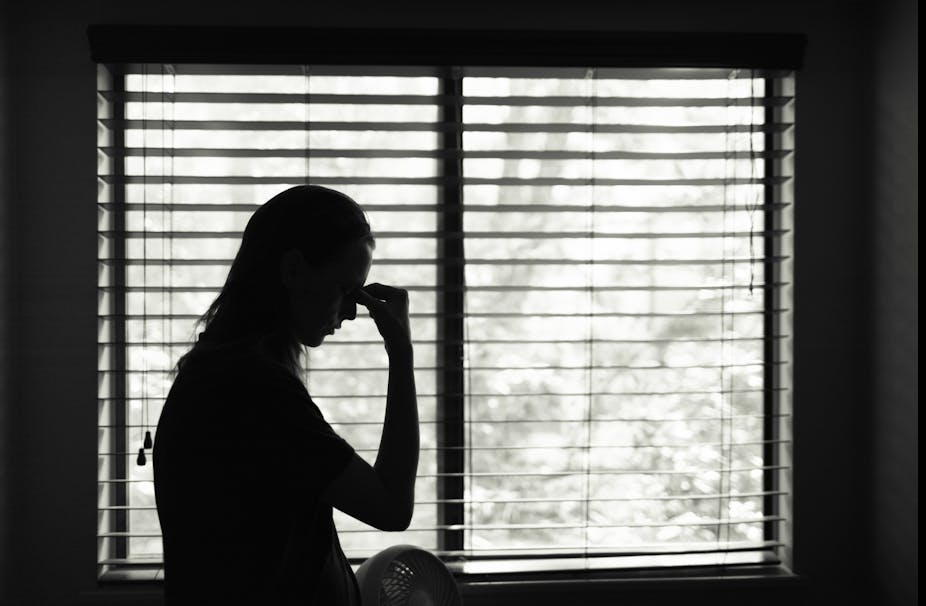As we face rising COVID infection rates, the possibility of additional quarantines rises. Although stay-at-home orders might protect individuals from the virus, home isn’t safe for everyone. Studies show that domestic violence calls to police and shelters in the U.S. have risen between 6% and 21% (variation depending on data source) since the start of the pandemic, with the largest increase happening the first five weeks of quarantine.
Calls to shelters and hotlines have also increased. Google searches for information about domestic violence hotlines have also gone up, with spikes last April, a time when most of the U.S. was under stay-at-home orders.
This is not surprising to those of us who study domestic violence. With COVID-19 came higher unemployment and financial strain, both correlated with domestic violence. As quarantines and social distancing continue, isolation increases, social support lessens, mobility decreases, access to resources is strained, and stress from the changes in routine, like work and school closures, rises. Life is turned upside down.
As researchers who study intimate partner violence, we know the pandemic has only exacerbated many of the risk factors for the escalation of violence. One example: Partners’ spending more time together than usual, such as during the holidays, increases risks of family violence.
Stress, economic hardship, a lack of social support, gun ownership, lower educational status, and drug or alcohol abuse are risk factors for intimate partner violence. All of these factors are exacerbated during a pandemic.

Getting reliable data
All of these factors are red flags, indicating that victims may be at heightened risk during these trying times. However, getting data during a pandemic is particularly difficult. Under the best of circumstances, data must be collected, processed, and analyzed before numbers can be presented to the public. That always takes time. A pandemic complicates things even more. Right now, we do not have updated national statistics on victim reports of domestic violence during the pandemic. That’s why, to get immediate numbers, we rely largely on the police call or shelter call data.
But that 6% to 21% jump in calls likely underestimates the problem. Interactions with police officers are down overall, in part, because of social distancing policies and practices. However, even before the outbreak, domestic violence was an underreported crime.
The increase in calls appears to be coming largely from households where police have not made contact before and those in rental complexes, perhaps a result of neighbors reporting because, in spending more time at home, they are more likely to be witnesses. In contrast, incidents in rural communities where housing is spaced far apart are likely underrepresented in our current data. Even before COVID-19, the severity of domestic physical abuse was worse in rural areas compared with urban. The lack of public transportation in rural areas adds to the problem because it is more difficult for victims to escape or reach shelters that are often in urban locations. These issues have only been heightened by the pandemic.

What can help
One possible way to improve response is to let victims report abuse in nontraditional spaces, like pharmacies. This approach has been used successfully in France and Spain. For instance, in Spain, victims use a code word – “Mask 19” – when speaking to pharmacists to identify the need for help. Traditional sources, like hotlines and 911, could allow for coded reporting also. With shelters less available during the pandemic, hotels have been used to house victims.
Social media outlets could offer innovative ways to make reporting easier; for instance, private features, such as hidden “customer service” chat rooms on platforms that link to the national hotline, could benefit victims trying to reach out while their abuser is nearby. Shortening the hotline number to three digits – a more memorable, quicker dial – could also help. All of these changes, particularly now, can help victims find the privacy they need so they can safely report the abuse.
If you need help in a domestic violence case, call the National Domestic Violence Hotline at 1-800-799-SAFE (7233); text LOVEIS at 22522; or visit this website.
[Deep knowledge, daily. Sign up for The Conversation’s newsletter.]

